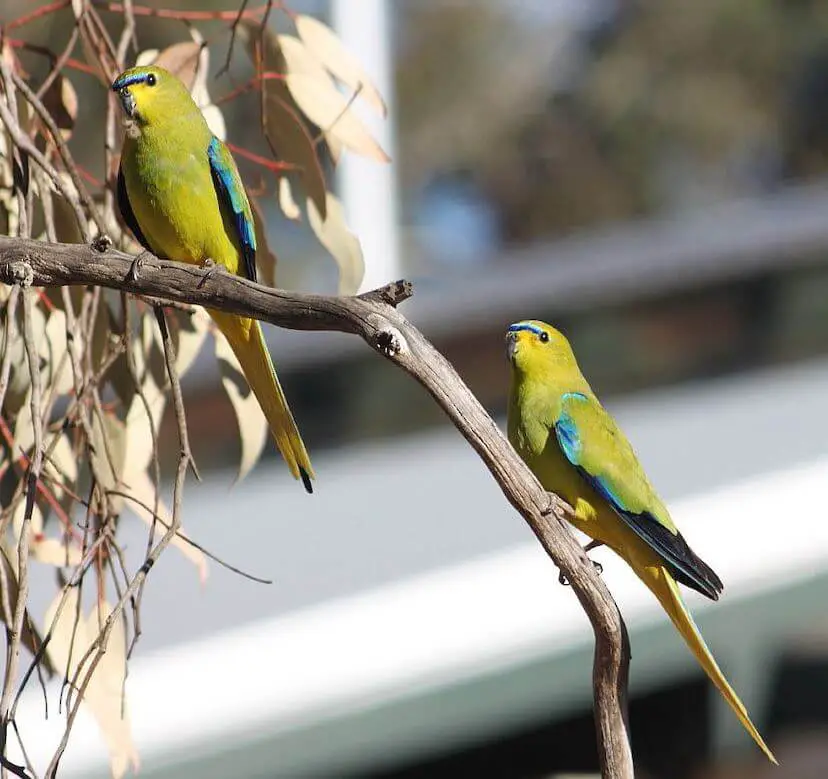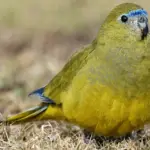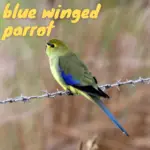
Elegant Parrot 22–23 cm; 42–51 g. Extremely similar to N. chrysostoma but plumage brighter and more yellowish notably on breast, with inner wing-coverts concolorous with mantle, reducing the amount of blue in the wing, and with outer median coverts pale blue;
pale blue upper fringe to line across the forehead more prominent and replaces yellow postocular patch; no bronze in the crown. Elegant Parrot Female duller olive green. Immature-like female with a reduced line on the forehead.
Systematics History
SW population described as race carteri, but considered too poorly differentiated to warrant recognition. Monotypic.
Subspecies
Monotypic.
SOURCE: polytelismedia
Distribution
SW Western Australia, and SC South Australia (including Kangaroo I) to W Victoria.

Habitat
Coastal dunes, wooded and shrubby grasslands, mallee, eucalypt woodland, dry Acacia scrublands, blue bush flats, and saltbush Atriplex plains, favor clumps of trees within cleared areas.
Movement
Partly nomadic, particularly at the edges of range; some small-scale seasonal movements may also occur, but recorded to few to determine a pattern. Records from Kangaroo I are from Nov–to Apr, suggesting breeding presence followed by the winter period on the mainland.
Diet and Foraging
Elegant Parrot Seeds of clover Trifolium, Paspalum grasses, Lomandra, and several species of twinleaf Zygophyllum were recorded.

Sounds and Vocal Behavior
Elegant Parrot Not very vocal. When flushed an electric buzzy “zzt…”. Also an emphatic repeated “street!”. When feeding gives a soft twittering.
Breeding
Aug–Nov. Elegant Parrot Nest in hollows are usually high in trees, often in horizontal hollows in high limbs of isolated trees or trees in isolated clumps. Eggs 4–5; incubation c. 18 days; nestling period c. 30 days.
Conservation Status
Not globally threatened. CITES II. Common, particularly in SW Australia, where since the 1930s numbers and range have increased in apparent response to land clearance and the use of clover T. subterraneum in pastures.





















